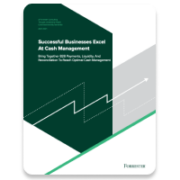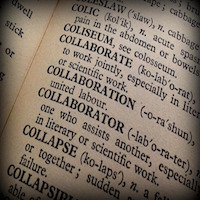Do Androids dream of Electric Spreadsheets? A Beginner’s Guide to AI in Treasury – Part II
| 03-03-2020 | treasuryXL | Cashforce |
MISSED PART I? YOU CAN READ IT HERE.
Not too long ago, AI seemed a distant dream for creatives in Hollywood and sci-fi movies such as Blade Runner. Today it is all around us. We carry it in our pockets, it harnesses the technology in self-driving cars and it teaches itself how to solve a Rubik’s Cube in under a second. As this technology matures, every company must ask itself the central question: Will artificial intelligence disrupt my industry? And how can it benefit me? While the world of finance may have a conservative ring to it, it is rapidly modifying to a digital future. We can already see artificial intelligence being used in many applications.


Just as Blade Runner was an artistic catalyst for future-noir narratives, so is machine learning essential for the narrative of treasury automation.
For example, machine learning algorithms are incredibly good at recognizing corrupt financial activities or identifying bank fraud since it can handle information thousand times faster than we can blink. Algorithms analyze user actions and distinguish between various types of transactions by gathering a huge amount of data (Big Data). By pointing out odd behavior, it learns over time and becomes even better at it. Another way Big Data is being used, is through credit scoring. By deciding who is eligible for a credit card and who isn’t the algorithm takes over the role of a human analyst.
Not only for analysis purposes but also for saving costs you will find different applications. Today we see customer care or cold calling getting replaced by talking bots, almost indistinguishable from human interaction, helping enterprises save a lot of time and money.
Finance is a fundamental aspect of everyday life for everyday people, all around the world. The endless potential is mesmerizing and what we now see is only the tip of the iceberg. However, the sudden shift is already delivering tangible business benefits. So where does this sudden shift come from? First off, as we’ve seen in part 1, the shift has been going on for well over a decade, silently emerging. The market is becoming more and more electronic, due to the explosion of the amount and speed of data in- and output. Secondly, the cost of running high powered computing networks came down drastically. These two key factors resulted in a trend that has never been seen before.
Crystal Ball or Digital Snake Oil?
So what exactly is true of the hype? I’ll be the first one to admit that the proclaimed revolution is often widely exaggerated and ungrounded. When it comes to stock market predictions, a monkey with a dartboard still has the upper hand compared to powerful AI tools in many occasions. Success in human-imitative AI has in fact been limited due to the complexity of human intelligence. It has layers of nuance still to be grasped. In addition, to answer on a human intellectual level is not the same as understanding the meaning behind it. Thus, the challenge of creating humanlike intelligence in machines remains greatly underestimated.
So where is the line between the crystal ball that knows all and digital snake oil? So far, the limiting factor lies in automated and repetitive processes. The basic approach only works in a closed domain with strict rules, such as chess or Go. Now if you add in the word ‘tedious’ to ‘automated’ and ‘repetitive’, you will have the perfect recipe for what is a monotonous task in finance: Managing & updating spreadsheets.
Electric Spreadsheets
Plumbing the depths of the seemingly infinite sea of spreadsheets is still a known task in treasury, although the negative consequences are common knowledge among business departments. According to our survey, still more than 90% of companies use Excel spreadsheets for their day-to-day operations. Yet, technology doesn’t suffer from some of the dilemmas humans may face in finance which could affect people’s ability to make good decisions: Computers don’t need vacations or sleep, they are less biased and they can do the job more precise. These are obstacles in which AI, in comparison to managing spreadsheets manually, can excel.
Another factor that heavily influences the conversion to artificial solutions is the huge amount of data spread over different branches in a company. Though every department has its own responsibilities, it still has useful data. This untapped information, called Dark Data, has the potential to create a bridge between treasury and other branches, leaving more room for actual analysis between departments within. It goes without saying, AI is remarkable for finance and the promises of this technology, including Big Data, are starting to enter the realms of possibility.
A Crystal Clear Future
A great example in which artificial intelligence has become an especially important asset is effective cash flow forecasting, one of the essential components of treasury which requires a varied skill set. Despite our best intentions, no human being has the cognitive prowess to deliver a fully accurate prediction of the future. As cash forecasting is in most cases still manually managed through spreadsheets, this often results in forecasting errors. Now, technological improvements are quickly reshaping current business strategies. AI algorithms can be of help in this case to complement the human industry expertise and business acumen, while effectively using historic data to paint a more accurate picture.
So how does this work in practice? One possibility is by analyzing a vast amount of data from your ERP and TMS system and attributing certain weights to time-based (day, week, month, …) or amount-based (customer’s payment behavior) parameters. Through variance analysis, the AI system can continuously learn and adapt to new data and expose hidden patterns, making cash flow forecasts become more accurate over time. This can be combined with statistical methods such as linear regression or time-series analysis to create synergies for accuracy.
Not only will AI help with the processing of data, but it will also change the role of the treasury department altogether. Cash forecasting administrators will be better placed to direct their time to the greatest effect, draw out valuable insights from the AI-produced forecast and tailor the process over time to address any variances. The combined intelligence, in which humans and machines have vastly different thought processes, produces superior results. In the future, AI will become as important as the human component for financial decision-making. Collaboration is key, a crystal clear future is the aftermath.
With the help of an AI-based algorithm, a cash forecast with a considerable accuracy can be constructed.
One Night at Time
So Do Androids Dream of Electric Spreadsheets? To dream you need neurons which, until we’ve reached further, are only present in the brain and controlled by the principles of nature. It’s safe to say no blade runner will hunt down your Cash forecasting system (at least for now). But surely the world of finance will be disrupted by the unprecedented AI revolution, one night at a time.
Movie references aside, the better question would be ‘Can my company benefit from this emerging technology?’. Sitting still and letting your corporate competitors gain the first advantage through AI is a risk that every industry should consider for every relevant department involved. For now, we can only know for sure that this unfinished scenario could lead to all sorts of directions. With all these changes happening, you probably do want to be a part of it when the new script on AI in treasury is being written.









